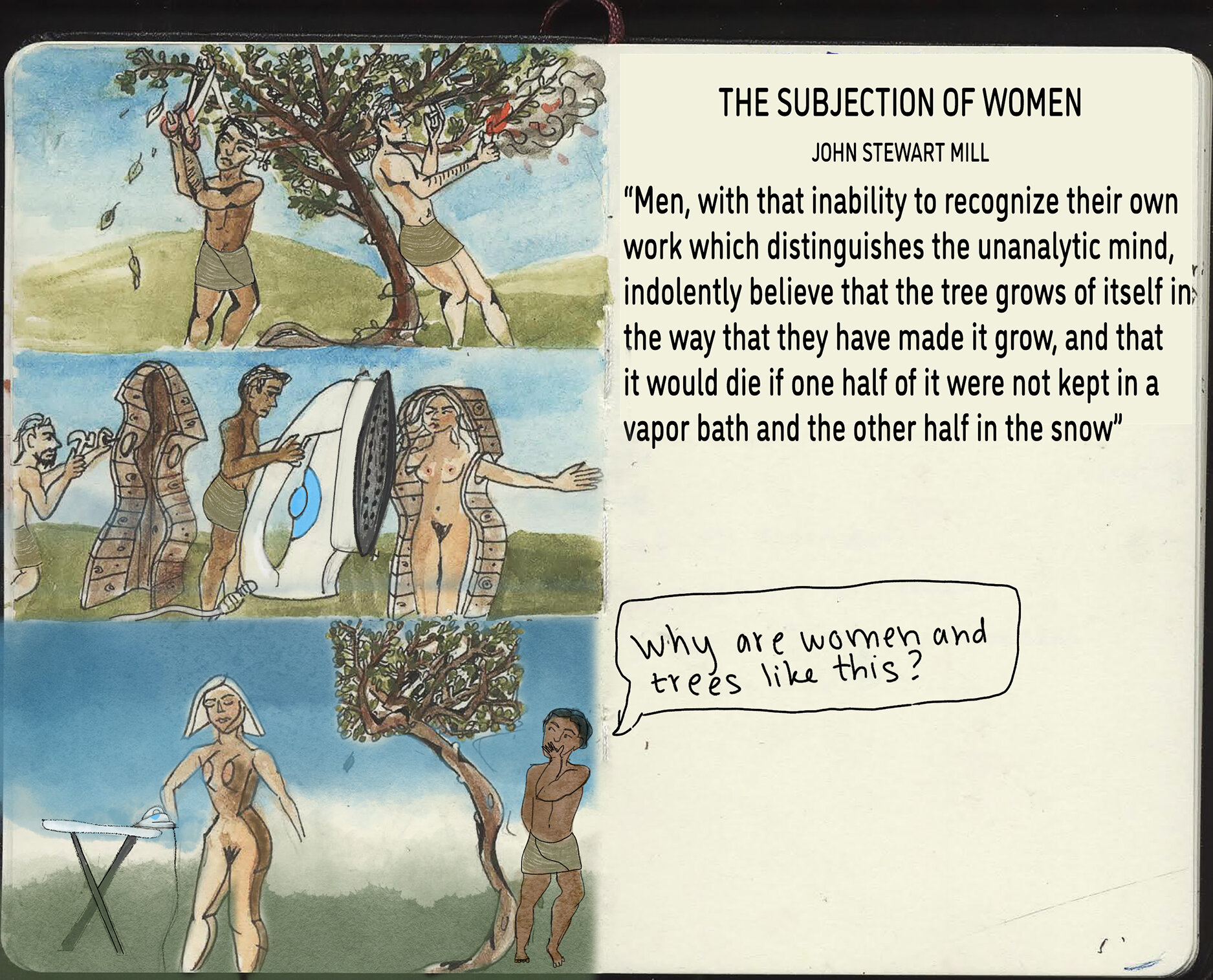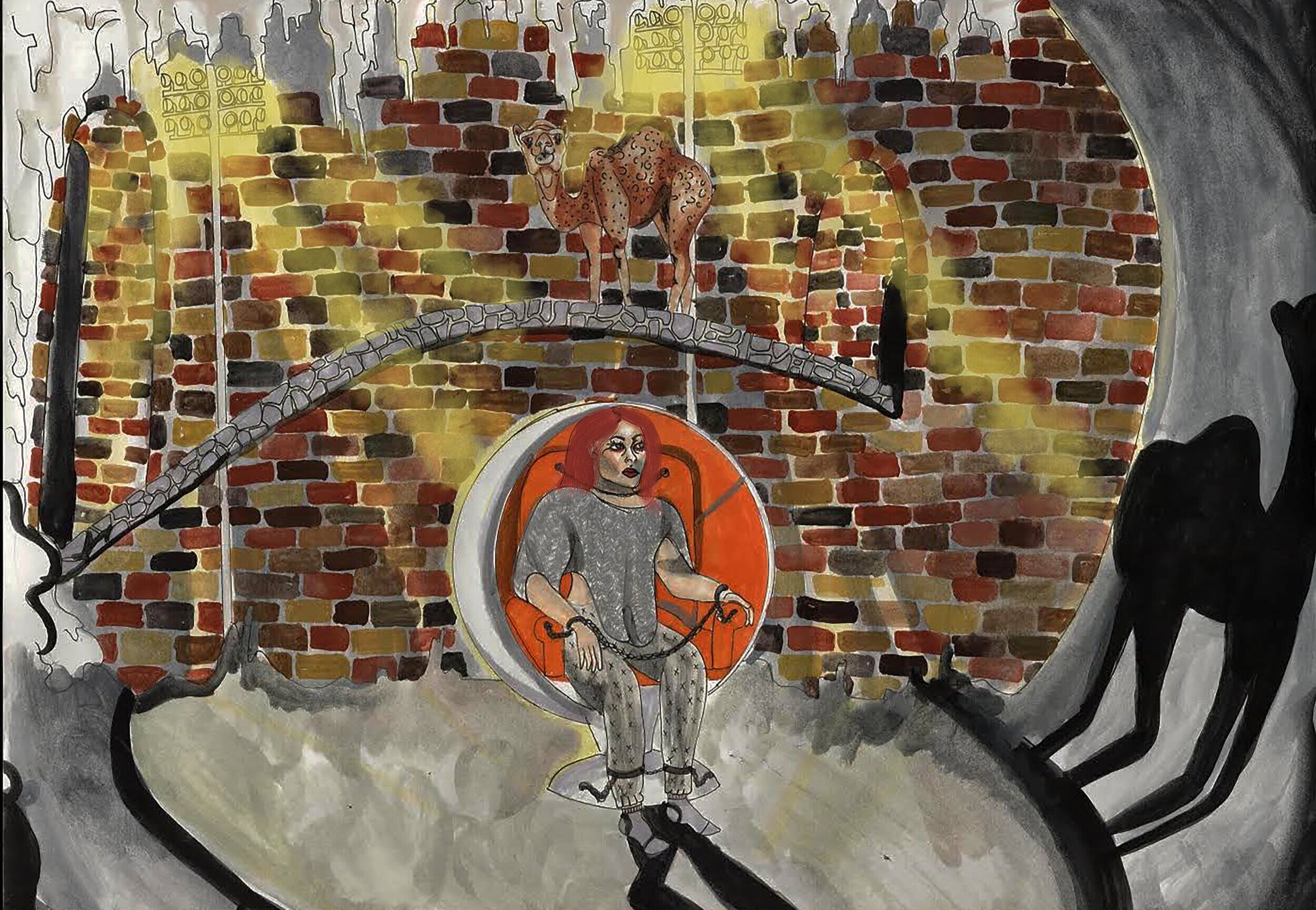Philosophy of Art and Pedagogy
An independent study, collaborating with professors to make illustrations that enhance the curriculum of their college intro-level philosophy classes. I transformed dense, inaccessible, and historically man-centered material into more coherent, women inclusive versions of classical thought experiments. (2018)
Robert Nozick, The Experience Machine
Can a visual depiction influence whether someone would choose an entirely virtual life?
The experience machine is a thought experiment conceived of by Robert Nozick to refute ethical hedonism. If you enter the machine you experience a virtual life with any preprogrammed successes you desire. If pleasure was all that mattered, people would accept this scenario even though their achievements would be artificial. The original text only uses “he” when describing people interacting with the machine, so I added a feminine slant.


My take: I put a twist on the thought experiment by posing two depictions of this machine that could realistically exist in the future. Would the machine itself appearing pleasant or unpleasant change whether someone would choose to enter? If someone is ready to abandon the real world for an artificial one they shouldn’t care what happens to their body, but the pleasant scenario feels more enticing.
Judith Jarvis Thomson, The Transplant Problem
This thought experiment is meant to challenge utilitarianism, the belief that any action is justifiable and moral if it positively impacts more people than it harms. Under utilitarianism it would be morally permissible for a doctor to kill one healthy person and use their organs to save five others.
My take: I created this interactive piece so students can open her up and remove some of the organs. The uncanny feeling of opening someone’s rib cage to steal their body parts helps students visualize this dystopian utilitarian society.
John Stuart Mill, The Subjection of Women
This reading is particularly difficult to comprehend. John Stuart Mills says men force trees to grow in an unnatural way and think that if they didn’t intervene in this way the trees would die. If they had left the trees alone they would have been fine. Men have done the same thing to women.
My take: I show men forcing a tree into an unnatural cube shape and forcing a woman into a box and using a massive iron to flatten her into a shape they designed. Later, a man observes the coiffed tree and the flattened woman ironing. He wonders “why are women and trees like this?
Allegory of the Cave, Plato
A group of people are chained in such a way that the only thing they have ever seen is the wall of a cave. Real things pass behind them on a bridge, casting a shadow on the wall so the only “things” the people ever see are shadows. To them the shadows are reality. If one of the people escaped, saw reality, and came back to tell the others they would not believe her. The woman can never go back to seeing the shadows as “real” objects. The cave is a symbol of ignorance and philosophy is a force that brings people out of the dark to see the world for what true, instead of just shadows the truth casts.
My take: The original description of the prisoners’ confinement sounds so physically uncomfortable that people might focus on how awful being chained would feel. So I depicted the scene using Oberlin’s iconic womb chairs so viewers can focus on the discomfort of ignorance rather than the imprisonment.
Logical Fallacies
Misinformation is pervasive and can be dangerous, as we’ve seen in the last year regarding the elections and COVID-19. To avoid misinformation or deception it is crucial to understand tricks cunning politicians equip, or even unwitting people use in casual conversation. The image below is a concept for a series of illustrations teaching people different errors in logic they probably encounter or fall into using themselves. It is empowering to be able to identify when someone’s argument actually relies on cheap lexical tricks.




